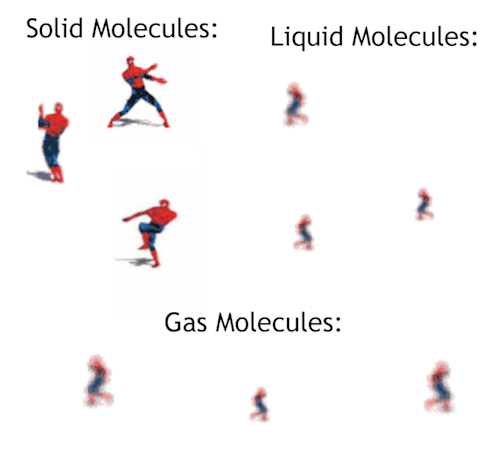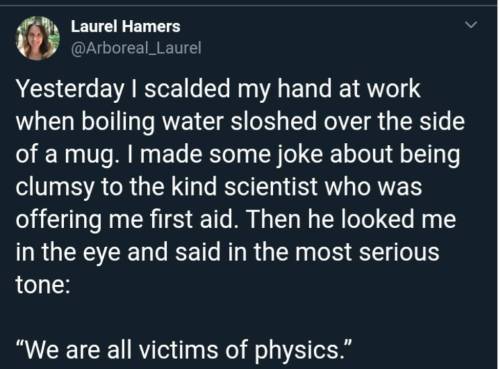From Seed To Market: How NASA Brings Food To The Table
From Seed to Market: How NASA brings food to the table
Did you know we help farmers grow some of your favorite fruits, veggies and grains?
Our Earth-observing satellites track rainfall amounts, soil moisture, crop health, and more. On the ground, we partner with agencies and organizations around the world to help farmers use that data to care for their fields.
Here are a few ways we help put food on the table, from planting to harvest.
Planting

Did you plant seeds in science class to watch them sprout and grow? They all needed water, right? Our data helps farmers “see” how moist the soil is across large fields.
“When you’re not sure when to water your flowers or your garden, you can look at the soil or touch it with your hands. We are sort of ‘feeling’ the soil, sensing how much water is in the soil – from a satellite,
685 kilometers (408 miles) above Earth,” said John Bolten, the associate program manager of water resources for NASA’s Applied Sciences Program.
This spring, we worked with the U.S. Department of Agriculture and George Mason University to release Crop-CASMA, a tool that shows soil moisture and vegetation conditions for the United States. Able to see smaller areas – about the size of a couple of golf courses – the USDA uses Crop-CASMA to help update farmers on their state’s soil moisture, crop health and growing progress.
Growing

It’s dangerous being a seedling.
Heavy spring rains or summer storms can flood fields and drown growing plants. Dry spells and droughts can starve them of nutrients. Insects and hail can damage them. Farmers need to keep a close eye on plants during the spring and summer months. Our data and programs help them do that.

For example, in California, irrigation is essential for agriculture. California’s Central Valley annually produces more than 250 types of crops and is one of the most productive agricultural regions in the country – but it’s dry. Some parts only get 6 inches of rain per year.
To help, Landsat data powers CropManage – an app that tells farmers how long to irrigate their fields, based on soil conditions and evapotranspiration, or how much water plants are releasing into the atmosphere. The warmer and drier the atmosphere, the more plants “sweat” and lose water that needs to be replenished. Knowing how long to irrigate helps farmers conserve water and be more efficient. In years like 2021, intense droughts can make water management especially critical.
Harvest
Leading up to harvest, farmers need to know their expected yields – and profits.
GEOGLAM, or the Group on Earth Observations Global Agricultural Monitoring Initiative, is a partnership between NASA Harvest, USDA’s Foreign Agricultural Service (FAS) and other global agencies to track and report on crop conditions around the world.
USDA FAS is one of the main users of a soil moisture measurement product developed by Bolten and his team at our NASA Goddard Space Flight Center to drive their crop forecasting system.
If you’re interested in more ways we support agriculture, stay tuned over the next few weeks to learn more about how satellites (and scientists) help put snacks on your table!
Make sure to follow us on Tumblr for your regular dose of space!
More Posts from Science-child and Others

Happy New Year From NASA! The year 2021 was one for the books, so what will 2022 bring? No matter what, remember: You are made of star stuff. Sparkly, glorious star stuff.
What's this image? Click here. Credit: ESA/Hubble and NASA, A. Sarajedini Make sure to follow us on Tumblr for your regular dose of space!
Why is the final phase so difficult?Sorry if I sound dumb,I'm just curious.Also,what will be the rover's first task after landing?
why are cheetahs not technically big cats? is it just because they're weird as hell or do they not meet some big cat criteria?
so the thing about Big Cats is that they’re all closely related members of the genus Panthera!

because they’re all part of the same lineage, they share a lot of traits like the ability to roar.
and cheetahs are actually members of a completely different cat lineage altogether, the genus Acinonyx!

they’re not very closely related to the big cats at all and are actually most closely related to Pumas, which you can totally see if you stack them up next to each other and squint really hard.


it’s okay though, the cheetah can still be the biggest cat in our hearts :’)

Our universe is FULL of strange and surprising things.
And luckily, our Hubble Space Telescope is there to be our window to the unimaginable! Hubble recently ran into an issue with its payload computer which controls and coordinates science instruments onboard the spacecraft. On July 16, teams successfully switched to backup hardware to compensate for the problem! A day later, the telescope resumed normal science operations. To celebrate, we’re taking you back to 2016 when our dear Hubble captured perhaps one of the most intriguing objects in our Milky Way galaxy: a massive star trapped inside a bubble! The star inside this Bubble Nebula burns a million times brighter than our Sun and produces powerful gaseous outflows that howl at more than four million miles per hour. Based on the rate the star is expending energy, scientists estimate in 10 to 20 million years it will explode as a supernova. And the bubble will succumb to a common fate: It’ll pop.

Got a question about black holes? Let’s get to the bottom of these odd phenomena. Ask our black hole expert anything!
Black holes are mystifying yet terrifying cosmic phenomena. Unfortunately, people have a lot of ideas about them that are more science fiction than science. Don’t worry! Our black hole expert, Jeremy Schnittman, will be answering your your questions in an Answer Time session on Wednesday, October 2 from 3pm - 4 pm ET here on NASA’s Tumblr! Make sure to ask your question now by visiting http://nasa.tumblr.com/ask!
Jeremy joined the Astrophysics Science Division at our Goddard Space Flight Center in 2010 following postdoctoral fellowships at the University of Maryland and Johns Hopkins University. His research interests include theoretical and computational modeling of black hole accretion flows, X-ray polarimetry, black hole binaries, gravitational wave sources, gravitational microlensing, dark matter annihilation, planetary dynamics, resonance dynamics and exoplanet atmospheres. He has been described as a “general-purpose astrophysics theorist,” which he regards as quite a compliment.

Fun Fact: The computer code Jeremy used to make the black hole animations we featured last week is called “Pandurata,” after a species of black orchid from Sumatra. The name pays homage to the laser fusion lab at the University of Rochester where Jeremy worked as a high school student and wrote his first computer code, “Buttercup.” All the simulation codes at the lab are named after flowers.
Make sure to follow us on Tumblr for your regular dose of space: http://nasa.tumblr.com



I hope you will enjoy this Halloween special. Today, we are trying something a little bit different by exploring the evolution of a particular animal : Bats.
While their evolutionary history is shrouded in mystery, they allow us, nonetheless, to explore 2 interesting ideas :
1- Convergent evolution : How organisms tend to evolve similar (albeit not identical) body plans as solutions to similar problems (flight in birds, bats and pterosaurs)
2- Prediction : Like any theory, evolution is not only descriptive, but also predictive. Thanks to its models and principles, it allows us to make predictions to complement our gap in observational data.
Happy Halloween!
P.S. : The blog in the third picture is neither scientific nor peer-reviewed. But it is a nice illustration of how the common ancestor of bats MIGHT have looked like, and how using basic principles from evolution, phylogeny, and comparative anatomy, we can visualize how some animals have come to be what they are.
-
 mega-mike-2-0 liked this · 10 months ago
mega-mike-2-0 liked this · 10 months ago -
 invincibleworld liked this · 10 months ago
invincibleworld liked this · 10 months ago -
 healing-thoughts-actions reblogged this · 1 year ago
healing-thoughts-actions reblogged this · 1 year ago -
 healing-thoughts-actions liked this · 1 year ago
healing-thoughts-actions liked this · 1 year ago -
 letuce369 reblogged this · 2 years ago
letuce369 reblogged this · 2 years ago -
 ceabeautii liked this · 3 years ago
ceabeautii liked this · 3 years ago -
 the-void-in-general liked this · 3 years ago
the-void-in-general liked this · 3 years ago -
 appla1 reblogged this · 3 years ago
appla1 reblogged this · 3 years ago -
 onemanonegod liked this · 3 years ago
onemanonegod liked this · 3 years ago -
 youthhopes reblogged this · 3 years ago
youthhopes reblogged this · 3 years ago -
 notsospoon liked this · 3 years ago
notsospoon liked this · 3 years ago -
 somni-omni liked this · 3 years ago
somni-omni liked this · 3 years ago -
 spaceinvaderhere reblogged this · 3 years ago
spaceinvaderhere reblogged this · 3 years ago -
 saltythexfilesindianjonescop liked this · 3 years ago
saltythexfilesindianjonescop liked this · 3 years ago -
 technologistsinsync reblogged this · 3 years ago
technologistsinsync reblogged this · 3 years ago -
 sagacious-sam liked this · 3 years ago
sagacious-sam liked this · 3 years ago -
 raventhinks reblogged this · 3 years ago
raventhinks reblogged this · 3 years ago -
 level-666 liked this · 3 years ago
level-666 liked this · 3 years ago -
 jdsme liked this · 3 years ago
jdsme liked this · 3 years ago -
 wuvupandesal liked this · 3 years ago
wuvupandesal liked this · 3 years ago -
 da-mage liked this · 3 years ago
da-mage liked this · 3 years ago -
 jaclynwashere reblogged this · 3 years ago
jaclynwashere reblogged this · 3 years ago -
 izmarvelous liked this · 3 years ago
izmarvelous liked this · 3 years ago -
 shirodumbclownwolf liked this · 3 years ago
shirodumbclownwolf liked this · 3 years ago -
 ahmed-mer-blog liked this · 3 years ago
ahmed-mer-blog liked this · 3 years ago -
 pinkiepieaddict reblogged this · 3 years ago
pinkiepieaddict reblogged this · 3 years ago -
 biblioimmortal reblogged this · 3 years ago
biblioimmortal reblogged this · 3 years ago -
 algorizmi reblogged this · 3 years ago
algorizmi reblogged this · 3 years ago -
 tools333 liked this · 3 years ago
tools333 liked this · 3 years ago




